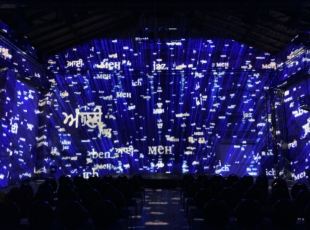Albertine Meunier, data is her mantra!

Article author :
Albertine Meunier is a trailblazer of the digital arts she has been actively involved with since 1998. Her installations and performances nurture a critical eye in which irony is key. Since she began 25 years ago, the artist has developed her work on the basis of the data accumulated on the web, which makes her perspective on the evolution of the internet an exceptional witness statement….
The French artist loves to imagine projects with simple forms, deliberately remote from hyper-technicity, in which the ingenuity of the concept predominates. In l’Angelino (2009), a mechanical dancer is held captive in a musical ball. Connected to the internet by means of a microcomputer of the type manufactured by Arduino, the dancer comes to life and moves to a melody each time the word ‘ange’ (angel) appears on Twitter. A tongue-in-cheek way of revisiting the expression ‘un ange passe’ (an angel passes by, meaning an awkward silence, a tumbleweed moment), and which in itself reveals much about the way Albertine Meunier’s mind operates. ‘I am often told that I am mischievous. To start with, I wasn’t necessarily so, but the internet has become a powerful colossus. Humour is a credible response to this power, a form of soft revolution. It allows you to tackle important subjects with more levity,’ explains Albertine Meunier, a member of the DataDada collective, another of her waggish projects. ‘In 2014, I co-wrote a DataDada manifesto with Julien Levesque. We wanted to express our opposition to the transformation of data as a simple digital occurrence. Today, there are five of us artists in the collective and we imagine installations said to be pointless and quirky. Détournement amuses us.’ A preliminary assessment, then: in individual or collective practice, Albertine Meunier’s humour serves the ends of research into data (begun 25 years ago). The artist, who has a background in the sciences, has since the 1990s had a kind of fascination for understanding the mechanisms of the internet, when it first appeared and the key role data has played in its development.
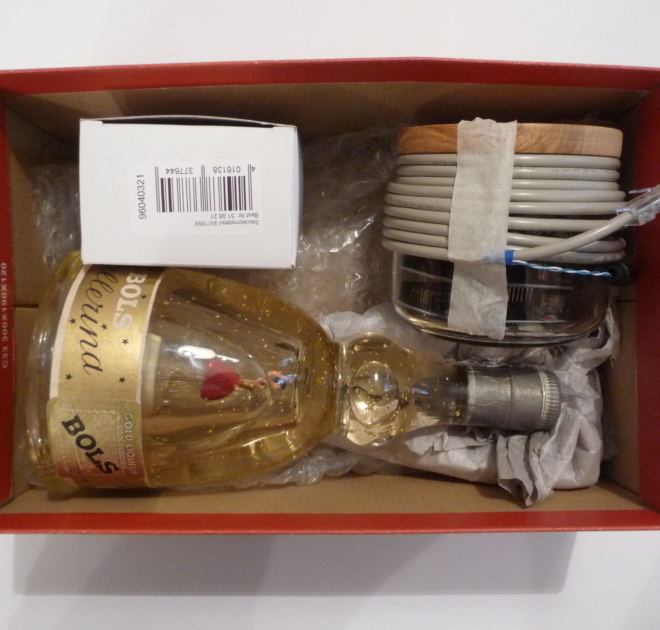
Data and the infancy of the internet
‘At the beginning, I didn’t reflect on a guiding thread for my work. I worked on data spontaneously. I was fascinated to see that I left so many traces on the internet. I wanted to create a mirror effect of this identity and store certain data myself.’ This is undoubtedly a perfect summation of the project My Google Search History (2006-2011). In 2006, Google launched the Search History service and stored the searches carried out by internet users. For 16 years Albertine Meunier has been compiling her searches and offering them up for public viewing. Placed end-to-end, they narrate a story that of the artist, but also that of the web.
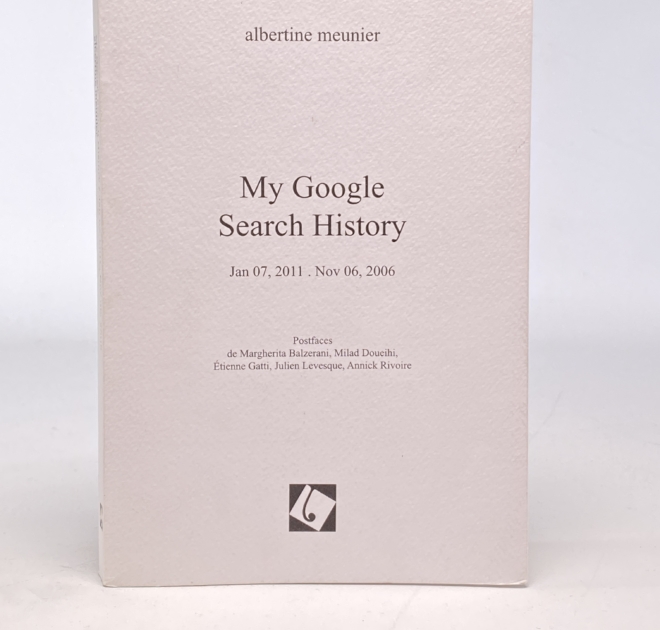
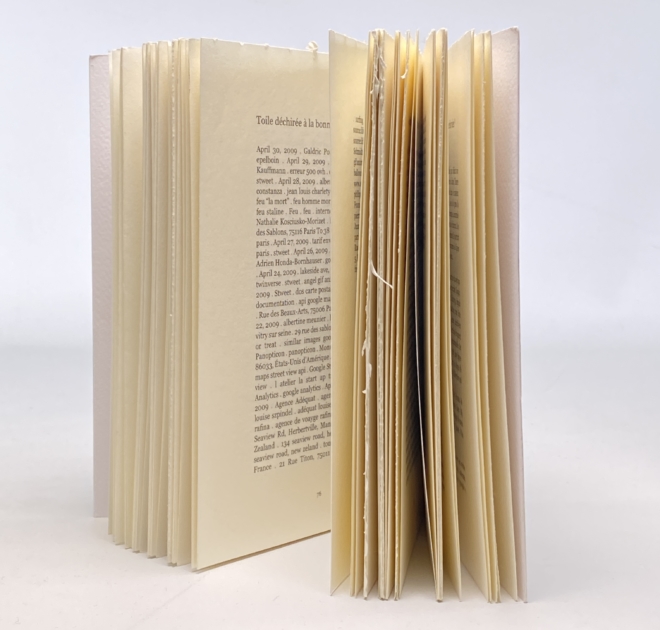


My Google Search History is also a complete inventory of all the searches she has made since 2006 in the form of a long list of requests. If the issue of trace and accumulation is a significant aspect of her work, Albertine Meunier shines a light on certain paradoxes contained within it: ‘With l’Angelino, I quickly realised that our data is dependent on third parties. When a change was made to the way Twitter functions, I no longer had access to the data. I had to carry out a lot of maintenance operations on the apparatus of l’Angelino.’ The direct consequence? Step by step, Albertine Meunier has imagined artistic devices evolving towards greater simplicity. ‘Up until then, I had been looking for ways of making the internet material. It was pointless and I had the feeling that I was trying to bear witness to something over which I had a loss of control. It’s just like the internet, in the end. Ever since, I have explored subjects which have no use-by date.’
The abuses of data
With this in mind, French data touch (2018) is one of the simplest forms within her artistic corpus. The premise is the following: what if the medium of song was the best means of circulating and bringing up sensitive subjects which involve the new technologies? Albertine Meunier has created an album in which she wittily and in off-beat ways disseminates short stories about our relationships with the internet giants and Big Tech (GAFA). The goal? To talk about data in a light-hearted way, including the uses it is put to and potential abuses of it.
The wish to address a very large audience is also visible in the project La Roue des DataPépettes(2017), a cheeky performance conceived by the DataDada collective in which the audience is invited to power an artificial intelligence (nicknamed Robert) by incorporating the random within it… Which the machine, too rational, is incapable of. The public leaves with amounts of data cash (datapépettes) in return for this service provided. This project underlines the way the data we give to capitalist companies gains added value, and directly echoes the performance within Casino Las Datas(2017). Working with Filipe Vilas-Boas and Sylvia Fredriksson, Albertine Meunier here imagines a casino in which everyone plays to hand over their data, without practically ever winning anything. A games room is filled with slot machines customised with the iconography of the internet. The place comes to life thanks to the players. Depending on the data, they agree to provide at the casino entrance – email, telephone number, Twitter ID, etc. – the players obtain a bucket filled with more or less tokens. Several combinations of the one-armed bandit reels are winning ones, including 666: jackpot, and a clue to the tainted game each internet user plays with their data.
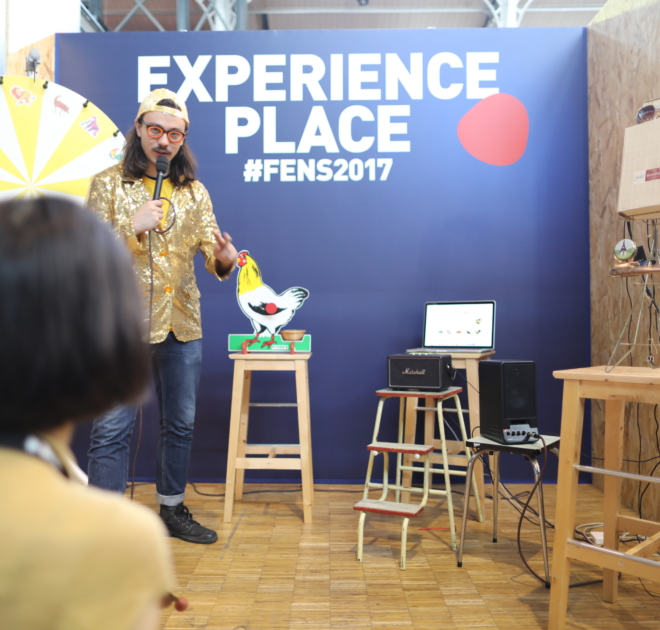
Data, the hidden part of the tech iceberg
Today, Albertine Meunier is pursuing her approach, keeping a close eye on internet traffic. ‘I am continuing my work by exploring non-fungible tokens (NFT) and artificial intelligence. The data is less visible, more underground, but it is essential to the way they function.’ Her interest has been especially focused on the NFT, the reflection of the Web 3.0 philosophy (the concept of a decentralised web using blockchain technology), with the artist amassing a collection of tokenised works. ‘I started collecting addictively. Then I took things further by creating images, animated or otherwise, a bit like I did at the beginning of my career. It’s like I’ve come full circle!’ A collection which will certainly find a specific artistic resonance in the coming years… Artificial intelligence has also become one of her favourite playgrounds. With Dall-E and Midjourney, she has been experimenting with the creation of images. In HyperChips (2023), the artist starts with a simple script – ‘Albertine Meunier is eating sausages and chips’ – before selecting the best images generated.






How are these images created? What is the data set? The series consisting of hundreds of images revisits the art of the self-portrait and is then NFTised. ‘I want to understand how artificial intelligences operate. These machines are so involved in the reproduction of human production… They can create absurd content but they are not aware of it. Creativity appears to be the prerogative of human beings. When an AI produces something you cannot make head or tail of, there is no self-deprecation in the AI. My research consists of looking into everything that a machine does not know it is doing.’ It will certainly require some later hindsight to understand the extent to which Albertine Meunier’s recent works are witnesses to and symbolic of a new internet evolution. Data being an infinite playground, the same will be true of all her future creations, which will be appreciated all the more after a certain lapse of time.
A story, projects or an idea to share?
Suggest your content on kingkong.
also discover

From Belgium to Japan, the new territories of creative digital creativity
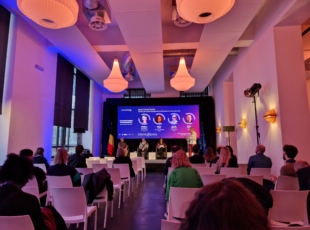
Stereopsia, the key European immersive technologies hub
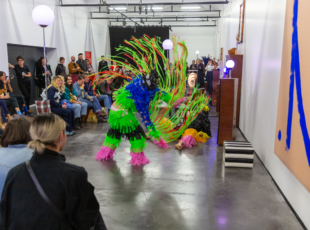
The Centre Wallonie-Bruxelles: a billion blue blistering harmonies
